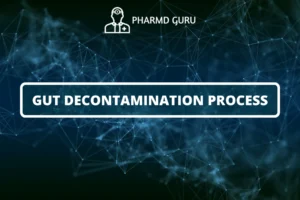Opioids toxicity: Opioids are a class of drugs that act on the opioid receptors in the brain and are commonly used for their analgesic (pain-relieving) properties. While opioids can be effective in managing pain, they also carry a high risk of abuse and addiction. In this article, we will explore the introduction to opioids, their clinical effects, the mechanism of action, and the management of opiates toxicity or opiate abuse.
SCROLL DOWN TO THE BOTTOM OF THE PAGE FOR ACTUAL NOTES
TABLE OF CONTENTS:
- Introduction to Opioids
- Clinical Effects of Opioids
- Mechanism of Action
- Management of Opiate Abuse
1. Introduction to Opioids
Opioids are a class of drugs that include both natural substances derived from the opium poppy plant (such as morphine and codeine) and synthetic or semi-synthetic drugs (such as oxycodone, hydrocodone, and fentanyl). They are primarily used for pain management, particularly in cases of severe acute or chronic pain.
2. Clinical Effects of Opioids
Opioids produce a range of effects on the body, including:
- Pain relief: Opioids bind to opioid receptors in the brain and spinal cord, reducing the perception of pain.
- Euphoria: Opioids can induce a sense of intense pleasure and relaxation, which contributes to their abuse potential.
- Sedation: Opioids can cause drowsiness and a state of calmness.
- Respiratory depression: One of the most significant risks of opioids is their ability to suppress the respiratory system, leading to slowed breathing or even respiratory arrest.
- Constipation: Opioids affect the gastrointestinal tract, leading to constipation as a common side effect.
- Nausea and vomiting: Some individuals may experience gastrointestinal disturbances when taking opioids.
3. Mechanism of Action
Opioids exert their effects by binding to specific receptors in the brain, spinal cord, and other parts of the body. These receptors are primarily classified as mu, delta, and kappa receptors. Activation of mu receptors is associated with pain relief, euphoria, and respiratory depression, while activation of delta and kappa receptors produces analgesia and other effects.
4. Management of Opiate Abuse
Opiate abuse and addiction are significant public health concerns. The management of opiate abuse typically involves a comprehensive approach that may include:
- Medical assessment: A thorough evaluation of the individual’s physical and mental health, as well as their substance abuse history.
- Detoxification: The process of removing opioids from the body while managing withdrawal symptoms under medical supervision.
- Medication-assisted treatment (MAT): The use of medications, such as methadone, buprenorphine, or naltrexone, in combination with counseling and behavioral therapies to support recovery and reduce cravings.
- Behavioral therapies: Counseling and behavioral interventions aim to address the underlying causes of addiction, develop coping strategies, and promote long-term recovery.
- Supportive care: Peer support groups, such as Narcotics Anonymous, and community resources can provide ongoing support and help individuals maintain abstinence.
ACTUAL NOTES




